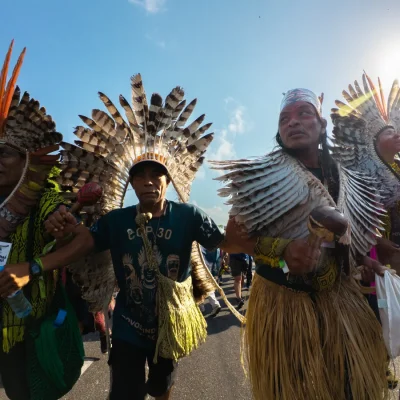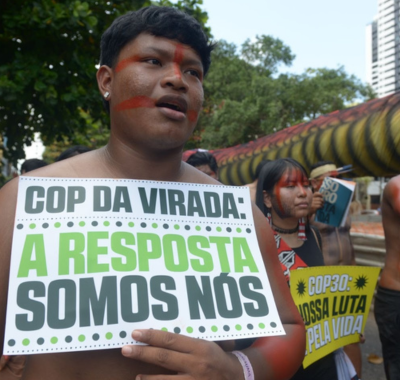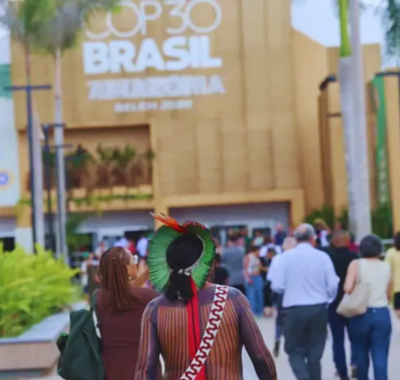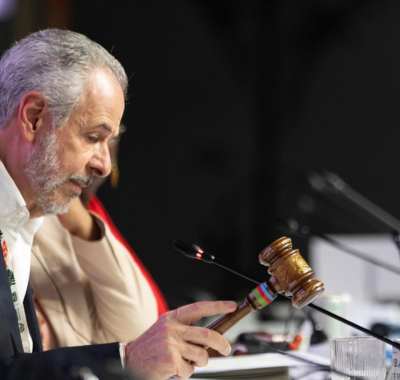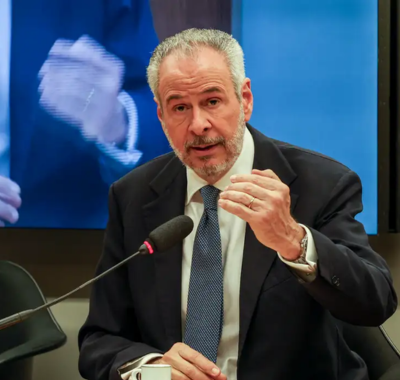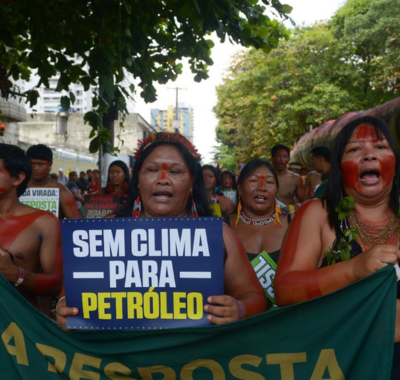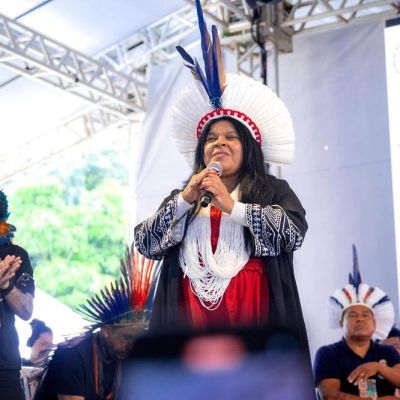Ten vulnerable municipalities in Brazil’s Northern Region now lead the federal government’s climate adaptation push
Nearly 3 million residents in Amazonian cities face the threat of floods, droughts, extreme heat, and environmental stress. These communities are now receiving adaptation plans covering infrastructure, biodiversity, urban development, and climate justice—all as COP30 centers on the biggest challenge of securing lasting, meaningful funding to turn proposals into public works and real protections.
By Steffanie Schmidt
In Brazil’s Northern Region, where most residents are of mixed race or Indigenous descent, nearly 3 million people in highly climate-vulnerable municipalities will be first to benefit from adaptation initiatives. These cities face flooding, landslides, heatwaves, severe droughts, and an intensifying cycle of extreme events. These areas reveal a complex mosaic of inequalities: expanding mining, unregulated urban growth, and traditional riverside economies now share the same risks.
According to the Brazilian Institute of Geography and Statistics (IBGE), economic disparity offers no shield against environmental threats. Municipalities with the lowest socio-economic indicators are concentrated along the same frontlines of environmental stress: Augusto Corrêa (US$1,454.80 [R$ 7,750.19]) in Pará, and São Gabriel da Cachoeira (US$1,688.71 [R$ 8,995.21]) and Benjamin Constant (US$1,625.04 [R$ 8,664.03]) in Amazonas, have the lowest per capita GDPs, driven by fishing, family agriculture, and extractive activities. At the other end are cities like Marabá (US$13,410 [R$ 71,473.92]) and Barcarena (US$8,821.68 [R$ 47,010.21]) in Pará, whose economies rely on mining, metallurgy, and port logistics—industries that, while generating revenue, also bear a legacy of environmental liabilities, deforestation, and river contamination.
Belém (US$4,170.77 [R$ 22,216.33]), Ananindeua (US$3,104.16 [R$ 16,542.68]), and Palmas (US$6,187.35 [R$ 32,977.35]) face a different crisis: rapid urbanization encroaching on mangroves, floodplains, forest remnants, and other fragile areas. Inadequate infrastructure and urban drainage turn heavy rainfall into increasingly frequent floods, threatening public health and essential services. Amid this diversity, vulnerability—not economic strength—emerges as the defining link.
Table: Per capita GDP data for selected municipalities.
This context shapes the adaptation policy the federal government is beginning to implement. Inamara Melo, director of adaptation at the Ministry of the Environment and Climate Change (MMA), says adaptation can no longer be limited to urban drainage. “We’re talking about a broad policy that goes beyond cities. It’s not just about housing or basic sanitation. It’s about tourism, cultural heritage, agriculture, food security, and health. The nine national objectives encompass a wide spectrum of public policy,” Melo said, presenting the Adapt Cities program to journalists at COP30 in Belém, Pará.
The government plans to apply an “adaptation lens” to all federal investments, including major programs like Minha Casa, Minha Vida (My House, My Life) and the Growth Acceleration Program (PAC). Infrastructure projects will only proceed if they account for future climate risks. “Before building a bridge, you have to determine if the river will rise; before approving a new housing development, you need to assess whether the area is at risk of flooding or collapse in the coming years,” Melo explains. The principle is simple: ensure today’s public investments do not become tomorrow’s disasters.
Achieving this goal requires specialized planning. Melo notes the main obstacle is not just a lack of resources, but also too few projects meeting the technical criteria of banks and climate funds. Currently, only a handful of municipalities routinely access federal or international funding, typically because they have dedicated teams and structured proposals. The government’s strategy includes a “project factory” to help vulnerable municipalities develop high-quality plans, proposals, and diagnostics—a prerequisite for unlocking investment.
According to the federal government, Adapt Cities (coordinated by the MMA under the Resilient Green Cities program) aims to reach 2,000 municipalities by 2035. The initiative focuses on training technical experts at the municipal level, standardizing methodologies, and enabling cities to design adaptation plans within a unified framework, while respecting local distinctions—whether rural, riverside, urban, agricultural, or industrial.
The selected municipalities highlight this range of challenges. Pará leads in numbers and overlapping threats: cities including Belém, Marabá, Ananindeua, Barcarena, Abaetetuba, and Augusto Corrêa are located in mining corridors, along navigable waterways, amid the expansion of agriculture and ranching, and in fast-growing urban areas. In Marabá, one of Brazil’s oldest mining hubs, extractive reserves, national forests, and Indigenous territories coexist with frequent fires, expanding pastures, and tailings dams. In Barcarena, repeated spills and pollution threaten riverside communities and protected islands. Belém and Ananindeua are spreading into sensitive areas—mangroves, floodplains, and forest fragments that once buffered floods and heat.
At the other extreme, São Gabriel da Cachoeira and Benjamin Constant show that even intact forests are not immune to climate collapse. Vast Indigenous lands like Alto Rio Negro and Vale do Javari still preserve primary forest, but worsening drought, record wildfires, and growing pressure from illegal fishing and mining prove that—in the Amazon—those who protected the forest now endure changes they did not cause.
The state of Rondônia, too, is also on alert. Pimenta Bueno is in one of Brazil’s most active deforestation frontiers: private lands have been cleared and burned, spreading fires into protected fragments. Even those working to conserve now suffer from neighbors’ destruction. Palmas, in Tocantins, stands at the edge of both the Cerrado and Amazon—regions beset by record wildfires, advancing pastureland, and intense, prolonged droughts.
The federal government aims to turn this agenda from sporadic or politically driven actions into lasting, integrated development policy.
Funding for the Adapt Cities program comes from federal sources and international partners, especially the Climate Fund. Linked to the Ministry of the Environment and Climate Change (MMA), the fund provides reimbursable financing (via the Brazilian Development Bank, BNDES) and non-reimbursable grants (through the MMA). The program is expected to increase the Climate Fund in 2025 by up to US$3.75 billion (R$ 20 billion).
Solutions
According to Philip Yang, the federal government’s special envoy for urban solutions, most climate adaptation efforts do not generate direct revenue—placing the financial burden on governments already facing fiscal constraints. He identifies this as a primary obstacle and recommends three solutions: formally partnering the United Nations Framework Convention on Climate Change (UNFCCC) with UN-Habitat; establishing a sub-national funding mechanism backed by a catalytic fund to prepare projects; and embedding the urban agenda deeply in COP’s political decisions.
This article was produced by O Varadouro as part of the Socio-environmental Collaborative Coverage of COP30. Read the original here.




